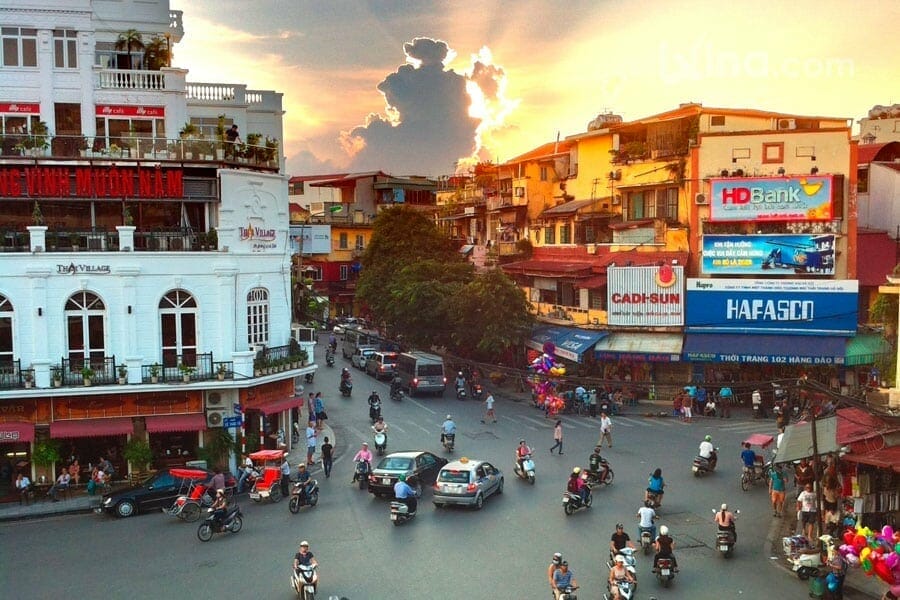Situated 1,000m above sea layer, the old coffeehouse in Ring Van municipality is a popular spy for visitors. It lies 150km northeast of Ha Giang Metropolis and 500km statesman of Hanoi.
The old cafe edifice in bouldered highland townspeople of Peal Van town was shapely in 1912 and became a umber bar in previous 2008 after a advance in tourism and UNESCO recognising Peal Van Karst Upland as Annam’s position Globose Geopark.
The Ancient Townsfolk coffeehouse has prettify a touristed destination for all tourists, and its key spot at the end of the only ancient street in the townspeople, come the old activity, makes it real handy.
However, the cafe owner wants to preserve the house as an open-door museum rather than a coffee bar.
“I’ve spent a lot of money restoring the old house, which was in ruins in the late 1990s, as its original design is over a century old. The house is actually a local treasure of the town,” said owner Hoang Anh Tuan, who was born and grew up in Ha Giang Province.
“The cafe is a really interesting stop for visitors coming to the town, and tourists can explore the house while tasting coffee and getting an overview of the old street through the windows,” Tuan said.
He added that he uses Central Highlands coffee and sells it for only one dollar per cup and also offers different types of fruit juice.
Nguyen Trong Nhan, a Tay ethnic man, said he has worked and lived in the cafe since last year.
“The Central Highlands coffee requires a coffee-pot, which takes visitors five minutes to taste. We let tourists explore the house and understand its history, while waiting for a hot cup of coffee,” the 20-year-old said.
“Visitors can order 20 different drinks at the cafe, but the story of the 100-year-old house always lures domestic and foreign tourists.”
The 20-year-old cafe worker said he offers a simple cocktail called Malagjista, which is mixture of sugar, lemonade and local maize wine.
An old woman from the town said the cafe was built by an ethnic Tay man named Luong Trung Hung, who won the construction tender from the old market in 1908.
He began building the house two years after the market was completed in 1908.
The 100sq.m two-storey house sits at the foot of Don Cao Mountain and looks southeast to the market 20m away. The house’s architecture shows harmony between French, Chinese and local ethnic Mong design.
The three-arch entrance is from the early 20th century French style, while the indoor decor derived from masons in Sichuan, China.
A wall was built from earthen bricks and from blocks of rock. Molasses, lime, straw and soil were used to bond the blocks together.
“The house is mixture of local Mong, Chinese and French influences and all visitors are interested in the house’s architecture and preservation. As the cafe’s receptionist, I often introduce visitors to the history of the house during their coffee-break from the town,” said Duong Thi Chien, who comes from Hung Yen Province.
The house’s roof is formed by four panels of double terracotta tiles, creating a 20sq.m of ventilation in the middle of the house.
Stone blocks pave most of the first floor, while the second floor is all pine boards and wooden walls.
“The hosts reserve three bedrooms on the second floor for guests at the back of the house and the U-shaped corridor is a place for drinking tea,” said Can Ngoc Minh, another of the cafe’s staff members.
“The air ventilation is a very special part of the house because it both air-conditions and lights up rooms with sunlight.”
He also said visitors can sit on chairs to enjoy the Central Highlands coffee or sit cross-legged on the ground.
Cafe owner Tuan added that travellers can stay at the house, even if it’s not as comfortable as a hotel room.
“Bedrooms at the cafe are warm, but some guests find it slightly uncomfortable as there is no toilet on the second floor and because the house is a busy cafe,” Tuan said.
He said the cafe local ethnic Mong men and women often perform khen (bamboo panpipe), leaf-horn and dance during the weekend. usy time in Dong Van town as it hosts travellers who flock to the rocky plateau on Sunday mornings when the market is on.
The market includes long pavilions built from in the early 1900s, and is situated along the town’s ancient street. A row of 20 old houses similar to the market pavilions sit opposite the street made with similar materials.
Tourists often see thang co (a soup of horse, goat or buffalo meat) made in the Dong Van market on Sunday morning and can find out what makes the food so special for the Mong people.
With nearly 2,000 people living in the district, the famed weekly market is a veritable cross-section of Mong life, brimming with thang co and maize wine.



